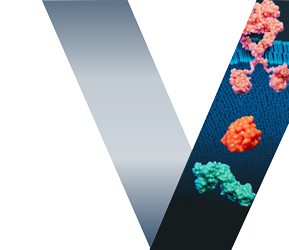Mechanism of Action Video Transcript
RAS, which includes KRAS, NRAS, and HRAS, is the most frequently mutated oncogene driving Because cancer has a strong dependence on the RAS pathway, blocking any single target is insufficient because the cancer will maintain its growth and survival through compensatory activation of signaling proteins elsewhere in the RAS pathway or in parallel pathways. For example:
1. ERK constantly suppresses upstream RAF signaling. Phospho-ERK inhibition by MEK-only inhibitors attenuates this suppressive signal to activate RAF kinase and reinvigorate tumor growth. MEK-only inhibition also induces phosphorylation and compensatory parallel pathway activation of FAK and potentially other parallel pathway signaling nodes that can drive tumor growth. Once activated FAK can drive compensatory signaling through pathways, such as PI3K, RhoA and YAP, effectively by-passing RAS pathway blockade and driving tumor growth.
2. Phospho-ERK inhibition by BRAF-only inhibitors also attenuates the suppressive signal from ERK to RAF and induces phosphorylation and compensatory activation of FAK. Avutometinib, which was previously known as VS-6766, is a first in class RAF/MEK clamp that blocks RAF and MEK signaling by holding ARAF, BRAF and CRAF in inactive complexes with MEK, and is the only agent in late-stage clinical development that blocks more than one node in the RAS pathway. In contrast to MEK-only inhibitors, when avutometinib blocks MEK and feedback reactivation of RAF occurs, RAF is now prevented from re-phosphorylating MEK and reactivating the ERK pathway, leading to a more pronounced and sustained response.
Novel combinations may be required to achieve the deepest and most durable response in RAS- mediated cancers. avutometinib has the potential to become a backbone of therapy by combining it with a variety of other agents targeting the RAS pathway and parallel pathways. Preclinical data have shown a strong synergy beween avutometinib in combination with inhibitors of other nodes of the RAS pathway, such as EGFR, KRAS G12C, SHP2, SOS1 and ERK1/2. Synergy of avutometinib with inhibitors of parallel pathway targets, including FAK, CDK4/6, PI3K, AKT and mTOR has also been demonstrated. For example, the combination of avutometinib with the FAK inhibitor, defactinib, blocks both RAF and MEK as well as the compensatory FAK activation for more complete blockade of signaling and tumor growth. Avutometinib has the potential to become the preferred backbone of therapy for a variety of agents targeting the RAS pathway and parallel pathways involved in tumor growth and metastases. With improved control over the RAS signaling network, it is possible to develop customized treatment combinations using avutometinib. Such combinations have the potential to significantly broaden the range of effective treatments available to patients with RAS pathway-driven cancers who currently have limited options.


